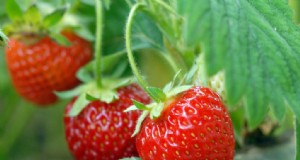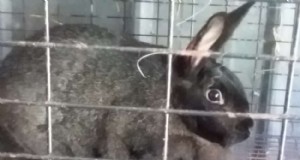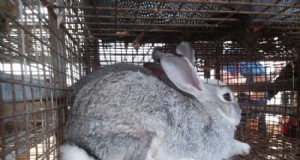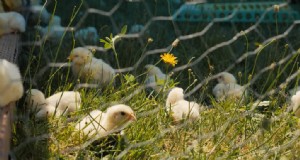Mempelajari cara beternak babi untuk diambil dagingnya adalah pilihan yang bagus untuk wisma atau peternakan mana pun yang ingin menjadi lebih mandiri. Tetapi memilih trah dan menyesuaikan perawatannya membutuhkan sedikit pengetahuan. Baca terus untuk 12 tips beternak babi untuk diambil dagingnya.
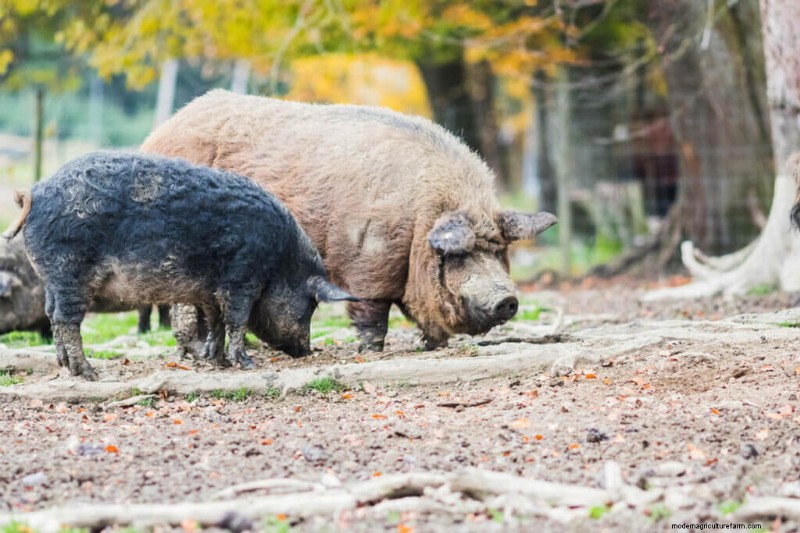
Pos ini awalnya ditulis dan diterbitkan pada tahun 2015 oleh Amy dari Peternakan Autumn Creek dan sejak itu telah diperbarui untuk menyertakan wawancara saya dengan “Pork” Rhyne Cureton untuk informasi lebih lanjut. Selamat menikmati!
Di podcast sebelumnya saya telah membahas bagaimana saya membesarkan American Guinea Hogs dan mengapa kami memilih ras tertentu itu. Dan di podcast lain saya membahas apakah menurut kami Guinea Hog layak untuk dipelihara atau tidak untuk daging , termasuk apakah kami akan membesarkan mereka lagi atau tidak.
Tamu podcast hari ini (Pioneering Today Podcast episode #331) adalah “Pork” Rhyne dan saya cukup beruntung telah bertemu dengannya di Homesteader's of America Conference . Saya tidak sabar untuk membawanya ke podcast untuk membahas semua hal tentang babi!
“Babi” Rhyne bekerja sebagai pendidik pertanian internasional dan pakar pemasaran daging khusus. Dia mendedikasikan hidupnya untuk melatih dan mendidik para petani berpengalaman dan pemula dalam bisnis dan pemasaran. (Baca hingga bagian bawah postingan ini tentang tempat Anda dapat menemukan Daging Babi online!)
Jika Anda belum siap untuk memelihara daging sendiri, yaitu daging babi karena itu topik hari ini, saya ingin merekomendasikan Kotak Jagal .
Butcher Box kebetulan menjadi sponsor dari Pioneering Today Podcast dan mereka mengadakan acara khusus hingga 20 Januari 2022 yang disebut Bundel Tahun Baru. Dalam bundel ini, hanya untuk pelanggan pertama, Anda akan mendapatkan 7 pon daging GRATIS di kotak pertama Anda! Buka butcherbox.com/pioneeringtoday untuk mendaftar!
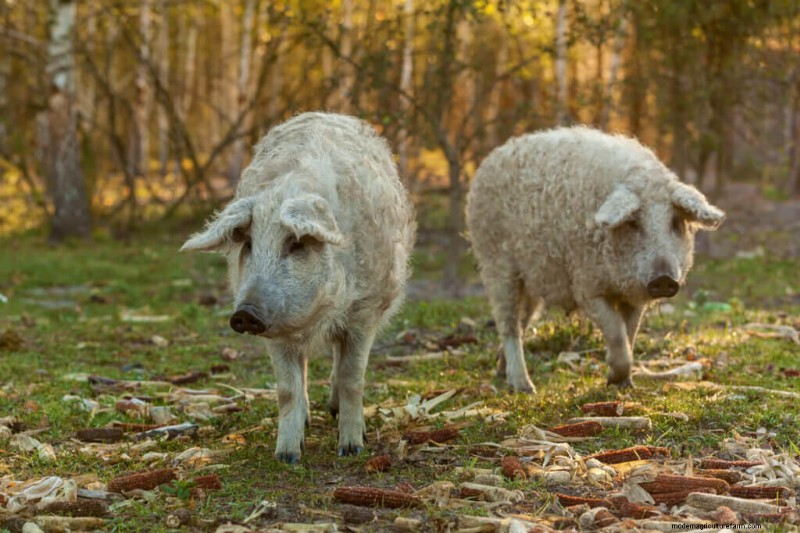
Mengapa Saya Suka Beternak Babi
Saya benar-benar berpikir babi adalah salah satu hewan yang paling mudah dipelihara di wisma. Mereka matang sedikit lebih cepat daripada sapi potong dan menghasilkan lebih banyak daging (dan lemak babi) daripada ayam atau kelinci (dan daging babi yang ditarik terus terang, daging asap segar, lemak babi yang dibuat di rumah , dan ham yang diawetkan dengan garam luar biasa!!!).
Hewan Lain untuk Dibesarkan
Sebelum beternak babi, untuk informasi lebih lanjut tentang beternak daging sendiri, pastikan untuk membaca postingan ini tentang merencanakan ternak dan beternak yang cukup untuk makanan selama setahun . Serta berikut ini untuk postingan khusus hewan lainnya:
- R memelihara ayam petelur di halaman belakang
- Beternak unggas pedaging di halaman belakang
- Cara beternak sapi perah
- Beternak kelinci pedaging
- Beternak domba (untuk serat)
- Panduan beternak kambing
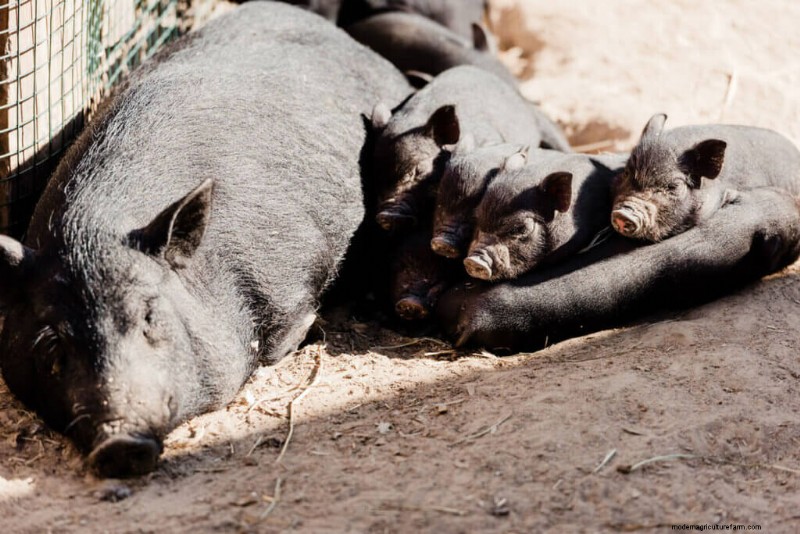
12 Tips Beternak Babi
Jadi mungkin Anda berpikir untuk memelihara babi (atau dua) dan tidak tahu harus mulai dari mana? Berikut adalah beberapa tips dan petunjuk yang saya harap akan membantu Anda dalam cara memelihara daging babi lezat Anda sendiri .
Beli Anak Babi
Bagi seseorang yang tertarik hanya memelihara beberapa babi dalam setahun untuk diambil dagingnya, lebih mudah membeli anak babi daripada beternak sendiri.
Harga anak babi bervariasi karena lokasi, waktu dalam setahun (harganya lebih mahal di Musim Semi ketika anak-anak dalam usia 4-H mencoba menemukannya), dan menurut jenisnya.
Pada saat awal penulisan posting ini (2015), anak babi dijual dengan harga sekitar $125/ekor tetapi mereka dapat ditemukan serendah $75 tergantung pada permintaan pasar. (Harga kemungkinan lebih tinggi sekarang.)
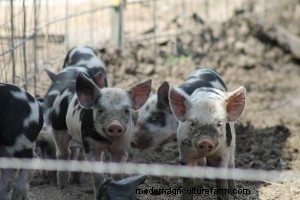
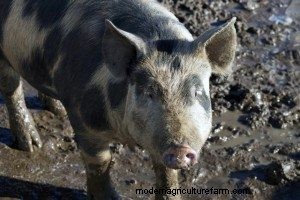
Usia Penting
Standar industri untuk menjual bayi babi adalah usia 6 minggu. Namun, kami menjual anak babi kami pada usia 8 minggu karena kami menemukan bahwa anak babi yang dibiarkan bersama induk babi selama dua minggu memiliki sistem kekebalan yang lebih kuat dan tidak perlu diberi pakan awal.
Tentu saja, itu berarti kita harus memberi makan babi lebih banyak untuk menjaga kondisinya, tetapi menurut kami anak babi yang lebih sehat sangat berharga.
Jika Anda dapat menemukan anak babi yang telah diizinkan untuk menyusui sedikit lebih lama, itu sepadan dengan biaya tambahan karena akan menghemat tagihan pakan Anda serta potensi masalah kesehatan bagi anak babi tersebut.
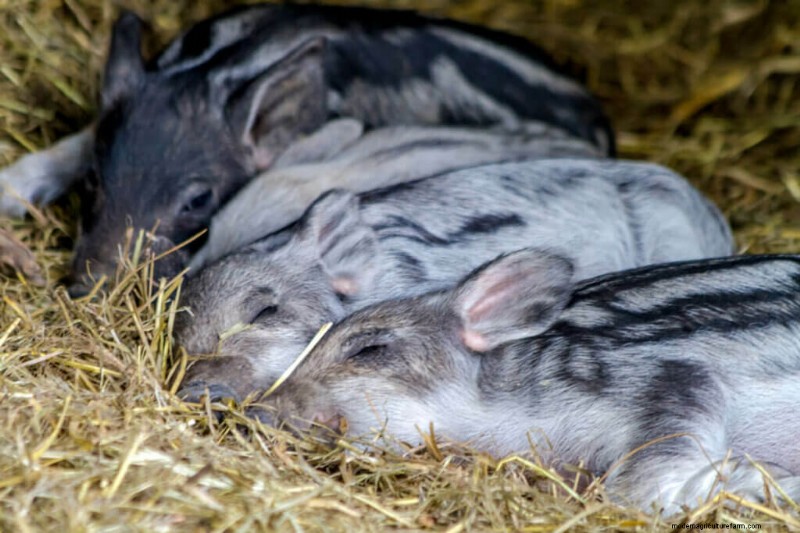
Pertimbangan Ruang
Sebelum Anda membawa pulang anak babi, Anda harus memiliki kandang dan semacam tempat berlindung untuk mereka. Saya akan berbicara lebih banyak tentang anggar sebentar lagi, tetapi ada beberapa pertimbangan yang perlu dipertimbangkan saat merencanakan pena Anda.
Jika kandangnya kecil, anak babi akan tumbuh lebih cepat karena mereka tidak memiliki banyak ruang untuk berolahraga dan tanahnya bisa benar-benar rusak.
Selain itu, di area yang lebih kecil, parasit memiliki peluang lebih besar untuk tumbuh. Terakhir, kandang kecil di Musim Semi saat cuaca basah bisa menghasilkan lubang lumpur yang besar.
Namun, seperti yang dibahas Pork Rhyne dalam wawancara podcast, ini tidak berarti Anda harus memiliki ruang untuk membebaskan atau menggembalakan babi Anda. Memelihara babi Anda sendiri adalah langkah besar dari membeli produk daging babi yang dibudidayakan secara komersial, bahkan jika Anda tidak memiliki kondisi hidup yang ideal untuk babi tersebut.
Kami lebih suka menggunakan area berotasi di bulan-bulan yang lebih hangat dan area yang sangat luas lebih dekat ke rumah di bulan-bulan yang lebih dingin (kami benar-benar menempatkan babi di area kebun kami selama musim dingin sehingga mereka dapat mengolahnya dan memupuknya sebagai persiapan untuk penanaman musim semi).
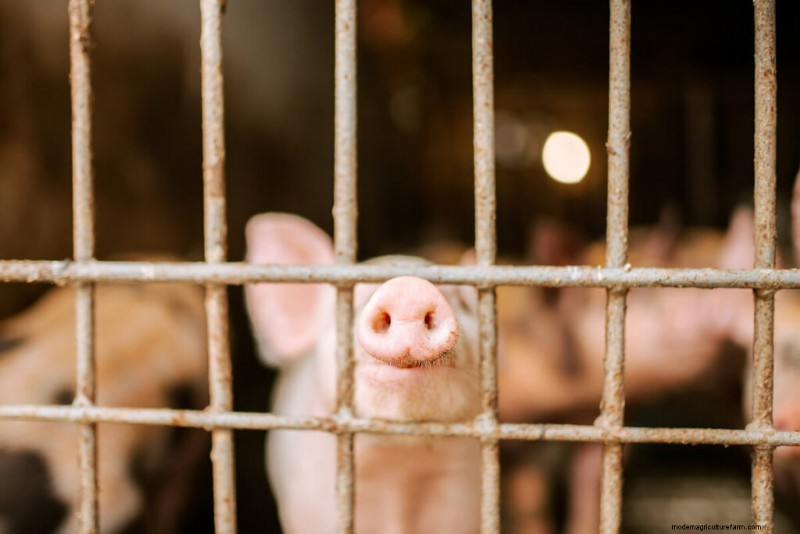
Pagar
Saat anak babi masih muda, lebih baik mereka berada di panel ternak, panel babi, atau kandang palet.
Jaring listrik, tali, atau kawat tidak bekerja dengan baik dengan anak babi kecil karena mereka dapat keluar (berbicara dari banyak pengalaman dan anak babi yang lepas landas selama dua minggu di hutan sekitar properti kami).
Kami memelihara anak babi di kandang panel ternak kecil dengan kabel listrik di bagian bawah sampai mereka berumur sekitar 12-15 minggu dan kemudian kami memindahkannya ke kandang yang dibuat dengan tali atau kawat listrik sampai mencapai berat pemotongan.
Biasanya, pada 12-15 minggu mereka dilatih untuk listrik dan cukup besar untuk tidak dipusingkan dengan melewatinya. Ada baiknya memiliki jalan keluar atau gerbang yang bukan listrik. Babi dapat dilatih dengan sangat baik untuk pagar listrik sehingga ketika kita ingin memindahkannya, mereka tidak akan mendekati tempat yang DULU ada pagar listrik.
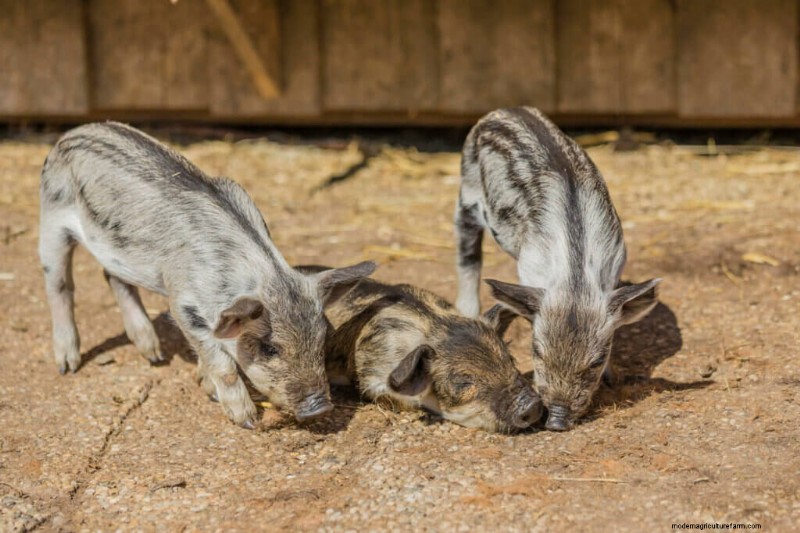
Memberi Makan Babi
Ada banyak cara yang memungkinkan untuk memberi makan babi Anda. Cara termudah adalah membeli penanam babi komersial. Babi tumbuh paling cepat pada jenis ransum ini. Sayangnya, sebagian besar formula penanam babi komersial mengandung jagung dan kedelai yang kemungkinan besar adalah transgenik.
Banyak pakan komersial juga mengandung obat-obatan yang mungkin juga tidak diperlukan untuk hewan Anda.
Karena kami tidak suka memberikan obat yang tidak perlu kepada hewan kami, pilihan lain adalah membuat pakan Anda sendiri dari sumber biji-bijian dan protein atau menemukan pakan buatan alami di daerah Anda.
Inilah yang dikatakan Pork Rhyne tentang memberi makan babi… Ada begitu banyak kontroversi tentang apa yang harus diberikan untuk memberi makan babi Anda, mulai dari pergi ke toko roti lokal Anda dan memberi makan roti tua hari babi, hingga hanya membeli pakan non-GMO terbaik, organik.
Ada begitu banyak orang yang baru mulai beternak babi yang sebenarnya tidak tahu seperti apa babi yang sehat itu. Jadi dia merekomendasikan untuk menghabiskan waktu dengan orang lain yang memelihara babi untuk belajar dan membiasakan diri dengan berapa banyak babi yang harus dimakan, bagaimana selera makan mereka bervariasi berdasarkan musim, dan seperti apa babi yang sehat itu.
Kami para wisma menyukai rute alternatif, kapan pun kami dapat melakukan DIY atau memiliki cara alternatif untuk melakukan sesuatu, kami akan melakukannya! Saya pikir itu sifat kita. Namun sebelum terjun ke dalam membuat pakan babi Anda sendiri, penting untuk memahami komponen pakan untuk mengetahui cara memberi makan babi untuk mendapatkan produk dengan rasio lemak:daging yang Anda sukai saat tiba waktunya untuk memotong daging.
- Karbohidrat – sumber energi, seringkali jagung atau biji-bijian
- Sumber protein – kacang kedelai, kacang lapangan, dll.
- Serat/Mineral/dll – ini akan menjadi sisa pakan untuk membantu menjaga babi tetap sehat
Setelah Anda memiliki komponen dasar pakan, penting juga untuk mengetahui ras spesifik Anda karena setiap ras akan memiliki kebutuhan karbohidrat dan protein yang berbeda.
Ketika berbicara tentang American Guinea Hogs, mereka cenderung obesitas sehingga mereka membutuhkan diet rendah karbohidrat untuk menghindari terlalu banyak lemak pada babi.
Pork Rhyne memiliki seorang teman yang sangat kecewa dengan jumlah rasio daging terhadap lemak yang dia dapatkan setelah menyembelih babinya, tetapi ternyata dia memberi makan babinya 16% protein kasar sepanjang hidup mereka alih-alih mengurangi protein sebelum menyembelih. .
Biasanya, sekitar 2-3 bulan sebelum penyembelihan, Pork Rhyne merekomendasikan untuk mengurangi jumlah protein hingga 12-14% dan meningkatkan jumlah karbohidrat untuk mengubah energi tersebut menjadi lemak.
Seperti yang saya katakan di atas, ini semua bervariasi antara breed dan berbeda untuk hereford, breed warisan, breed komersial, dll.
Selain pakan siap pakai, babi menyukai semua jenis produk. Anda bahkan dapat menanam tanaman khusus untuk babi Anda seperti mangels, lobak hijauan, bit, dan labu.
Di peternakan kami, kami memberi makan kombinasi jelai dan kacang polong yang bersumber secara lokal dengan tambahan mineral babi. Babi kami juga mendapat banyak susu segar, sisa makanan, apel dan labu lokal.
Tolong jangan memberi babi Anda sisa roti dan sejenisnya dan mengharapkan babi yang sehat dengan daging yang enak. Anda makan apa yang babi Anda makan, jadi kualitas itu penting.
Contoh lain cara memberi makan babi adalah bahwa Pork Rhyne memiliki seorang teman yang pergi ke Chipotle (jaringan restoran cepat saji) dan mengambil kacang yang tidak dijual ke konsumen untuk memberi makan babinya.
Saya semua untuk menjadi akal! Pastikan saja makanan yang Anda dapatkan bukan pasca-konsumen (artinya tidak disajikan terlebih dahulu kepada pelanggan, lalu dibuang ke tempat sampah karena akan menyebarkan penyakit ke babi Anda) dan pastikan tidak ada daging babi di dalam produk tersebut.
Satu hal yang saya suka lakukan adalah mencari sumber umpan saya secara lokal. Kami memiliki lumbung sekitar satu jam perjalanan yang memiliki sikap non-transgenik, dan juga mencoba mengambil biji-bijian mereka secara lokal juga. Untuk kiat menghemat uang saat membeli dari lumbung lokal Anda, lihat Menimbun Pakan Ternak (+ Berapa Banyak Memberi Makan Ternak).
Ketahuilah juga, jika Anda memberi makan babi Anda biji-bijian bekas (seperti biji-bijian pembuat bir yang mungkin Anda dapatkan dari tempat pembuatan bir), sekitar 80% darinya adalah air. Misalnya, jika biji-bijian itu kering, itu akan mengandung sekitar 29% protein, sedangkan biji-bijian itu basah (atau habis), hanya mengandung 7,7% protein kasar.
Biji-bijian bekas juga cepat berjamur, jadi Pork Rhyne merekomendasikan ini sebagai tambahan makanan, bukan sumber utama.
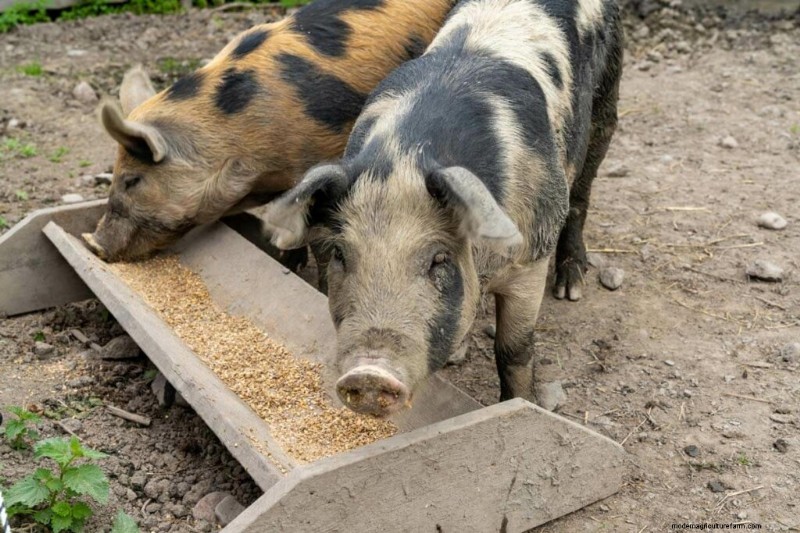
Permintaan vs. Pemberian Makan Terukur
Hal lain yang perlu dipertimbangkan saat beternak babi adalah apakah menyiapkan tempat makan sendiri dan membiarkan babi makan kapan pun mereka mau atau memberi mereka makan dalam jumlah tertentu setiap hari.
Ada pro dan kontra untuk keduanya. Permintaan makan membuat beban kerja harian lebih kecil kecuali pada hari ketika Anda harus mengisi tempat makan babi. Selain itu, jika babi selalu memiliki makanan yang tersedia, mereka cenderung tidak berakar sebanyak itu sehingga tanah Anda tetap dalam kondisi yang lebih baik. Babi yang diberi makan permintaan juga cenderung tumbuh lebih cepat sehingga waktu kedewasaan Anda lebih sedikit.
Masalah dengan permintaan pakan adalah babi bisa makan BANYAK makanan dan ini bisa menjadi mahal, terutama seiring bertambahnya usia babi.
Kami telah menemukan bahwa jika Anda hanya memelihara satu atau dua ekor babi, memberi makan permintaan adalah cara yang tepat. Ketika Anda menaikkan 10 atau lebih adalah saat itu bisa menjadi penghalang biaya.
Kami memberi masing-masing anak babi kami 5 pon campuran biji-bijian mereka setiap hari. Selain itu, mereka mendapatkan susu, sisa makanan, dan hasil bumi.
Hal ini memungkinkan kami memiliki babi berbobot pasar sekitar 8 bulan atau lebih.
Obat &Pembasmi Cacing (Penghilang Cacing DIY)
Saya bukan penggemar obat cacing kimia karena mutasi dan resistensi yang mereka ciptakan.
Di pertanian kami, kami telah menemukan bawang putih sebagai obat cacing yang jauh lebih efektif.
Kami menambahkan sekitar 1 pon butiran bawang putih ke dalam satu ton pakan.
Selain itu, minyak oregano juga ampuh melawan parasit dan infeksi.
Terakhir, kami menyediakan minyak esensial geranium untuk pendarahan (babi bisa mengalami perkelahian) dan minyak pohon teh untuk luka gores.
Kebiri atau Tidak?
Pengebirian babi adalah masalah kontroversial. Ada banyak yang menganggap praktik itu kejam dan tidak perlu, tetapi ada juga yang mengatakan itu perlu dilakukan untuk mencegah pencemaran babi.
Jika Anda memelihara dua babi jantan, Anda perlu menentukan apakah Anda ingin melakukan prosedur ini.
Namun, ketika Anda membesarkan anak babi dari lawan jenis, sebaiknya lanjutkan dan mengebiri. Ketika kami pertama kali memelihara anak babi, kami diberi tahu bahwa mereka tidak akan mulai berkembang biak sampai mereka berusia 9 bulan. Karena kami membantai pada usia 8 bulan, kami tidak berpikir kami perlu mengebiri.
Nasihat buruk dan kami berakhir dengan babi pasar hamil. Kami sekarang mengebiri semua anak babi jantan yang dibesarkan untuk diambil dagingnya. Kami telah menemukan Obat Penyelamatan Bach sangat membantu dalam prosesnya – ini membuat babi dan orang yang melakukan pengebirian tetap tenang.
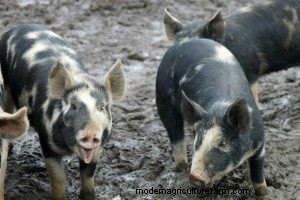
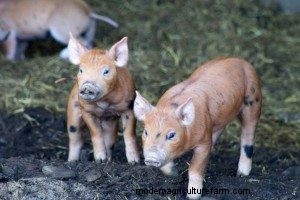
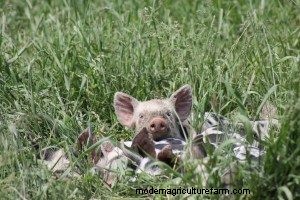
Breed Matter
Ras babi yang berbeda memiliki kualitas yang berbeda, termasuk perbedaan ukuran, kualitas daging, dan temperamen.
Ini adalah hal-hal yang ingin Anda selidiki saat memilih anak babi sebelum membawanya pulang.
Kami memelihara keturunan babi warisan (Gloucester Old Spot, American Guinea Hog, Tamworth) karena temperamennya yang jinak dan ramah serta kualitas daging yang sangat baik.
American Guinea hog adalah jenis babi yang jauh lebih kecil dan tidak akan menghasilkan berat karkas konvensional, tetapi karena kemampuannya yang mudah ditangani dan dagingnya yang berkualitas koki, ini merupakan pertukaran yang bersedia kami lakukan.
Babi pertama Pork Rhyne sebenarnya adalah ras warisan yang disebut "hitam besar" dan "goyangan merah", dia juga memelihara beberapa persilangan dan babi komersial.
200 tahun yang lalu babi tidak diberi makan makanan yang mereka dapatkan sekarang. Mereka adalah hewan dengan input rendah, seperti ayam, di mana mereka diberi makan sisa makanan dari dapur atau kebun, berkeliaran bebas dan memamah biak, dll.
Selama bertahun-tahun, babi adalah "gagal-aman". Jika suatu panen mengalami panen yang buruk dalam satu tahun, keluarga akan selalu memiliki babi untuk dijual guna memenuhi kebutuhan.
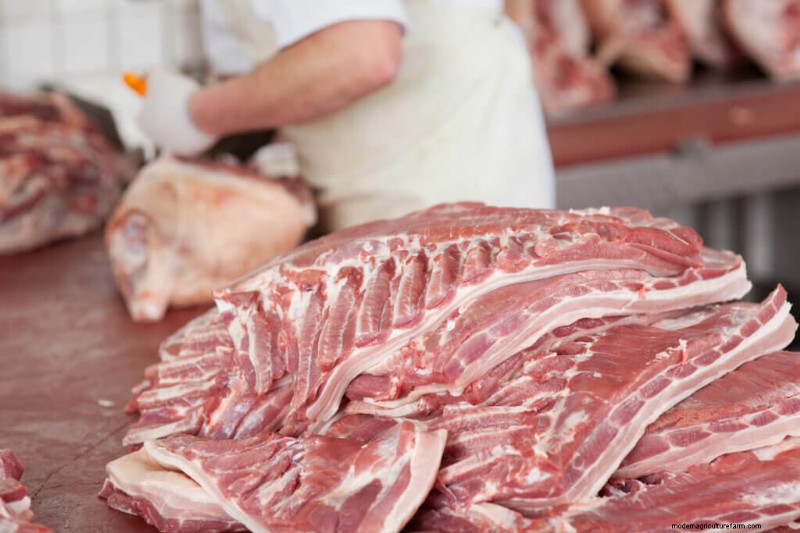
Berat Daging &Berat Gantung
Sebagian besar babi warisan disembelih saat beratnya sekitar 180-250 lbs hidup. Ini akan menghasilkan berat yang menggantung (daging dan tulang dikurangi kepala, kaki dan organ) mulai dari 160-225 lbs.
Berapa banyak daging yang Anda dapatkan di dalam freezer Anda sepenuhnya bergantung pada jenis potongan yang Anda pilih selama pemrosesan.
Penting untuk dipahami bahwa babi ras warisan tumbuh lebih lambat daripada babi komersial.
Biasanya trah warisan memakan waktu sekitar 8 bulan untuk mencapai berat sekitar 280lbs. Babi lemak babi membutuhkan waktu hingga satu atau satu setengah tahun untuk mencapai berat pemotongan (yang terkadang, tergantung pada jenisnya, tidak akan seberat itu).
Tapi babi komersial mencapai 280-300lbs hanya dalam 6 bulan. Jadi, Anda dapat melihat mengapa babi komersial menjadi lebih populer di peternakan besar.
Untuk informasi yang lebih akurat tentang setiap ras individu, unduh bagan ini dari Organisasi Konservasi Ternak .
Ketahui untuk apa Anda ingin beternak babi sebelum memilih ras Anda. Banyak breed yang jauh lebih baik untuk hal-hal seperti bratwurst, sosis, charcuertery, dll. sedangkan breed lain akan memberi Anda ham, daging babi, dan daging panggang besar.
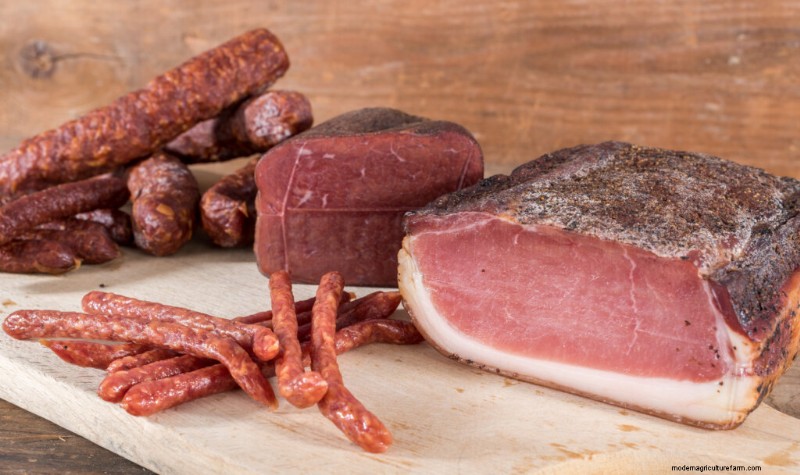
Haruskah Anda Menyewa Tukang Daging?
Kami telah menyembelih banyak babi di peternakan kami. Setelah Anda belajar melakukannya, itu tidak terlalu sulit, tetapi pertama kali bisa sedikit menakutkan.
Seluruh proses memakan waktu sekitar 3 hari. Hari pertama adalah membunuh dan menggantung, yang kedua menguliti dan memotong-motong, yang ketiga biasanya pengolahan sosis.
Kelemahan dari menyembelih diri sendiri adalah kecuali Anda tahu cara mengawetkan bacon dan ham Anda tidak akan mendapatkan potongan itu (Anda akan mendapatkan ham segar yang benar-benar enak tetapi tidak seperti ham yang diawetkan secara tradisional).
Manfaat menyembelih diri sendiri adalah pengetahuan dan penghematan biaya. Secara tradisional, biaya pemotongan babi berkisar antara $150-$250 tergantung pada pemrosesan dan pengawetan.
Rasanya Unggul
Dengan memelihara babi Anda sendiri, Anda mengontrol apa yang mereka makan yang menghasilkan produk yang lebih sehat untuk keluarga Anda.
Selain itu, beternak babi sangat menyenangkan dan saya suka melihat kejenakaan mereka. Namun, menurut saya alasan terbaik untuk beternak babi adalah rasanya. Setelah Anda mencobanya, Anda tidak akan pernah menginginkan daging babi supermarket lagi.
Selengkapnya Tentang Amy

Amy adalah seorang istri dan ibu dari 18 anak. Selain mengasuh dan mendidik keluarga besar mereka di rumah, mereka juga menjalankan pertanian keluarga kecil, yang mereka sebut “Autumn Creek Ranch .” Mereka menyukai karya Joel Salatin (saya juga!) dan telah mencontoh banyak hal yang mereka lakukan dengan teladannya.
Apakah Anda memiliki pertanyaan tentang beternak babi? Anda dapat mengirim email ke Amy di [email protected]
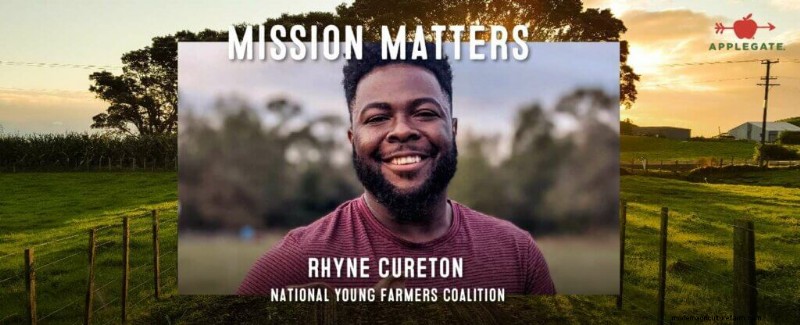
Selengkapnya Tentang “Babi” Rhyne Cureton
Pastikan untuk mendengarkan podcast (mulai dari menit 41) untuk mendengar tentang pekerjaan Pork Rhyne di negara-negara dunia ketiga melalui perusahaan EATBETA – Menginjili Afrika Melalui Pemberdayaan Bisnis dalam Transformasi Pertanian.
- Pork Rhyne TV di YouTube
- Instagram
- Facebook
- Penghuni Rumah Amerika
- Email:[email protected]
TranskripEmailDownloadTab Baru
Melissa K Norris: Hei, pionir. Selamat datang di episode nomor 331 dari Pioneering Today Podcast... Hari ini kita akan membicarakan salah satu topik favorit saya. Saya merasa mereka semua adalah favorit saya, tetapi ini pasti tinggi di sana, dan itu tentang beternak babi. Kami telah meliput beternak babi sebelumnya di berbagai episode podcast. Kami telah berbicara tentang ras Warisan American Guinea Hog yang dikenal ... Saya menggunakan tanda kutip, meskipun Anda tidak dapat melihatnya ... seperti, AKA, "babi pemilik rumah." Pengalaman saya, dalam catatan acara, kami akan menautkannya jika Anda ingin melihat beberapa episode sebelumnya, pengalaman saya dengan mereka.
Dalam episode hari ini, saya sangat bersemangat, karena kita akan menyelami babi, tetapi kita akan berbicara tentang banyak saran yang umum atau sering terlihat dalam hal beternak babi, khususnya tentang pakan, apa yang Anda beri makan babi Anda, pengelolaan padang rumput, dan beberapa hal lain seperti itu yang seringkali tidak akurat, atau belum tentu melayani babi dan peternak dengan sebaik-baiknya. Episode hari ini, kita akan membahas tamu hari ini. Saya sangat bersemangat. Anda akan mendengar, segera setelah kami memulai wawancara, bagaimana saya bertemu mereka, sedikit cerita latar. Saya akan memperingatkan Anda bahwa, ketika saya memperkenalkannya, volume Anda tidak terlalu keras. Ini hanya untuk menit pertama. Anda akan mengerti mengapa saya mengatakan itu ketika Anda sampai di sana. Semuanya sangat menyenangkan, dan menurut saya Anda akan benar-benar menikmatinya dan antusiasmenya tentang topik tersebut.
Sebelum saya kesana, episode hari ini disponsori oleh ButcherBox, yang cukup pas, karena kita berbicara tentang daging. Jika Anda belum mencapai titik dalam perjalanan wisma Anda, atau Anda tidak memiliki petani lokal tempat Anda dapat membeli daging, ButcherBox memudahkan untuk mendapatkan daging berkualitas tinggi yang dibesarkan secara manusiawi yang dapat Anda percayai. Mereka mengantarkan 100% pakan rumput dan daging sapi jadi, ayam organik bebas, dan daging babi warisan, bersama dengan makanan laut tangkapan liar, langsung ke pintu Anda. Kami sebenarnya telah mencicipi semua hal di atas. Itu selalu datang dan benar-benar beku, bahkan ketika itu di penghujung hari, dan di ujung rute pedesaan yang kami tuju untuk seorang pengemudi pengiriman. Kami belum memiliki yang tidak kami sukai. Saya sangat terkesan dengan kualitas, rasa, cara memasaknya. Semua di atas, jika itu bukan sesuatu yang dapat Anda tingkatkan sendiri.
Salah satu hal hebatnya adalah, karena Anda adalah pendengar Podcast Pioneering Today, ada acara spesial hingga 20 Januari. Ini adalah Bundel Tahun Baru. Anda bisa mendapatkan tujuh pound meet gratis di kotak pertama Anda saat mendaftar sebagai pelanggan baru di ButcherBox. Untuk mendapatkan itu, buka ButcherBox.com/PioneeringToday. Itu adalah ButcherBox.com/PioneeringToday. Dapatkan tujuh pon daging Anda gratis di kotak pertama Anda. Terima kasih banyak, ButcherBox, karena telah menjadi sponsor Podcast Perintis Hari Ini.
Jika Anda adalah pendengar baru podcast, selamat datang. Pendengar lama, tos. Selamat datang kembali, temanku. Nama saya Melissa K Norris. Saya seorang wisma generasi kelima, dan saya membantu ribuan orang, setiap bulan, belajar bagaimana menjalani kehidupan rumahan dan buatan tangan menggunakan wisma modern sederhana, di mana pun Anda berada. Tamu hari ini dikenal sebagai Pork Rhyne. Nama aslinya sebenarnya adalah Rhyne Cureton. Saya percaya begitulah cara Anda mengatakannya. Dia dikenal sebagai penginjil babi di seluruh negeri, dan bahkan di luar negeri di Afrika Timur, yang akan kita bicarakan beberapa orang. Saya merasa sangat menarik dan mempesona. Dia bekerja sebagai pendidik pertanian internasional dan pakar pemasaran daging khusus. Selama lebih dari lima tahun, Rhyne telah mendedikasikan hidupnya untuk melatih dan mendidik petani berpengalaman dan pemula, terutama pada produksi, bisnis, dan pemasaran ternak skala kecil. Kami pasti akan berbicara tentang beternak babi di lingkungan wisma ternak yang lebih kecil, jadi saya sangat, sangat bersemangat untuk menyambutnya di podcast, dan membicarakannya.
Untuk mendapatkan tautan ke beberapa episode sebelumnya yang saya sebutkan, dan beberapa hal yang akan kita bicarakan, Anda dapat mengambil semuanya di MelissaKNorris.com/331. Itu baru nomor 331, karena ini episode 331. Sekali lagi, MelissaKNorris.com/331. Mari kita ke episode hari ini.
Yah, saya sangat bersemangat untuk episode ini. Saya akan memperingatkan kalian semua. Ini akan menjadi energi yang tinggi, karena sangat sedikit orang yang saya temui yang cenderung memiliki tingkat energi yang saya miliki. Tanpa basa-basi lagi, Pork Rhyne, selamat datang di Podcast Pioneering Today.
"Babi" Rhyne Cureton: Saya senang. Saya senang. Anda membawa orang yang salah ke sini.
Melissa K Norris: Saya tidak berpikir tentang salah. Aku sedang berpikir tentang benar. Saya menyukai energi Anda di HOA, jadi saya sangat senang. Kami mengobrol sedikit sebelum kami mulai merekam, kawan, dan pada dasarnya saya mengiriminya undangan ke podcast yang tidak memberinya kesempatan untuk mundur, atau untuk mengatakan tidak. Saya pada dasarnya berkata, "Hei, tanggal dan jam berapa Anda ingin keluar?" Saya sangat senang dia menerima undangan bersenjata saya yang kuat dan menerimanya. Saya sangat bersemangat. Saya merasa kami akan membahas banyak hal dalam episode ini, jadi kami akan langsung membahasnya.
Salah satunya, saat kami mengobrol, itu benar-benar [tidak terdengar 00:06:06]. Anda mengatakan bahwa Anda melihat banyak hal yang ditawarkan secara online. Saya akan berasumsi, karena saya suka menganggap yang terbaik tentang semua orang, bahwa banyak dari hal ini ditawarkan dengan niat baik, tetapi Anda melihat banyak hal terkait beternak babi secara online, atau sering, menurut saya , yang menyebabkan masalah atau dapat menimbulkan masalah. Saya ingin Anda menyelaminya lebih dalam lagi.
"Babi" Rhyne Cureton: Oh ya. Oh ya. Mari kita bahas ini. Latar belakang tentang saya. Saya dulu bertani. Akan kembali bertani. Bekerja dengan National Pork Board di Pork Checkoff. Mengangkat keturunan warisan ketika saya bertani. Akan kembali menjadi keturunan warisan. Saya telah mengajari orang cara beternak babi, baik di seluruh negeri, maupun di luar negeri, selama lima tahun terakhir. Saya menggunakan pengalaman itu karena saya akan membicarakan hal ini.
Salah satu hal yang saya perhatikan dengan orang-orang yang terjun ke peternakan babi, dan mereka tidak pernah beternak babi sebelumnya sepanjang hidup mereka, kemungkinan besar mereka bahkan tidak berasal dari latar belakang peternakan, apakah ada banyak masalah masalah dalam hal pakan, dalam hal praktik lahan, dalam hal kesejahteraan hewan, dan saya berani mengatakan legalisme, ketika kita masuk ke kelompok wisma, kelompok yang merupakan alternatif dari standar dan model konvensional dengan industri daging babi. Saya telah melihat banyak informasi yang salah dalam hal berapa banyak Anda harus memberi makan babi Anda.
Oh man. Melissa, ada begitu banyak informasi yang bertentangan. Itu seharusnya membuat orang gila, jujur. Saya merasakan orang-orang yang beternak babi dan tidak tahu harus mulai dari mana, atau mereka pergi ke satu posting blog, dan kemudian mereka pergi ke beberapa video YouTube. Mereka mendapatkan informasi yang sangat berbeda. Sebenarnya tidak ada konsistensi atau kontinuitas. Kebanyakan orang mencari formula, seperti, "Formula apa yang bisa saya gunakan dan berhasil?" Satu mitos yang ingin saya hilangkan, salah satu mitos terbesar yang pernah saya lihat, cuci babi, adalah tidak ada rumus untuk ini.
Melissa K Norris: Amin. Amin.
"Babi" Rhyne Cureton: Sama sekali tidak ada rumus. Sekarang, ketika Anda masuk ke pertanian konvensional komersial, sebenarnya ada rumusnya. Jika Anda mengikutinya, Anda akan baik-baik saja. Untuk breed warisan, untuk orang yang beternak babi di luar ruangan, atau di padang rumput, atau di lumbung, sangat berbeda. Tidak ada konsistensi karena, A, Anda memiliki unsur-unsur yang mempengaruhi berapa banyak babi akan makan. Misalnya, saat panas, babi tidak suka makan saat panas. Mereka hanya tidak. Mereka tidak sedikit pun. Kemudian kemampuan mereka untuk mendapatkan massa otot dan lemak turun karena mereka tidak makan banyak. Benar? Saat dingin, mereka makan jauh lebih banyak, karena mereka mencoba menggunakan biji-bijian, atau apa pun yang Anda beri makan, sebagai cara menghasilkan panas agar mereka tetap hangat. Sebenarnya tidak ada konsistensi karena kami tidak beternak babi di lingkungan tikus percobaan. Kami hanya tidak.
Satu hal yang sangat saya promosikan adalah memiliki mata petani. Yang saya maksud bukan hanya memberi makan hewan, memberinya air dan tempat berlindung. Bukan hanya hal-hal itu, tetapi semua konten di antaranya. Benar? Yang benar-benar dibutuhkan adalah keterampilan observasi. Anda akan membuat kesalahan. Bukan kamu, Melissa, tapi penontonnya. [crosstalk 00:09:44]
Melissa K Norris: Oh tidak. Saya membuat banyak kesalahan, tapi terima kasih untuk itu.
"Babi" Rhyne Cureton: Mencoba untuk tidak menjatuhkan Anda di bawah bus ... Jika Anda bertani dan Anda memulai, Anda akan membuat banyak kesalahan, dalam hal pakan, dalam hal perumahan, dalam hal kesejahteraan hewan, dan itu baik-baik saja. Ada banyak informasi yang saling bertentangan di luar sana, dan banyak orang yang membuat video atau blog yang tidak memiliki latar belakang yang saya miliki, atau latar belakang yang dimiliki oleh peternak babi konvensional. Banyak orang belajar dari orang yang baru memulai. Ada banyak orang yang belajar tentang cara beternak babi dari orang yang sudah beternak babi selama satu tahun atau kurang. Benar? Orang-orang yang telah beternak babi, dan bahkan di luar rumah, selama beberapa tahun, lima tahun, 10 tahun, 20 tahun, mereka tidak online, karena mereka terlalu sibuk menghasilkan uang dengan beternak babi. Itu bisa menjadi masalah dalam banyak kasus.
Satu hal yang ingin saya katakan adalah bersyukurlah pada diri sendiri saat Anda memulai dan mencari tahu. Pahami saja bahwa tidak ada formula, dan formula itu berubah sesuai ras, dengan jenis babi tertentu yang Anda dapatkan. Bahkan dalam satu trah, ada variasi ukuran yang berbeda. Melissa, Anda membesarkan American Guinea Hogs. Ada tunggangan [tidak terdengar 00:11:01] besar, dan ada yang dibuat sangat kecil. Perbedaan tumbuh bisa sangat drastis antara dua jenis yang berbeda dalam satu ras. Ada banyak nuansa dengan beternak babi.
Bagian dari diri saya sekarang yang pada akhirnya memulai TV Pork Rhyne adalah membuat orang-orang memahami bahwa Anda dapat berhasil beternak babi dalam konteks khusus Anda. Yang penting adalah fleksibel, mampu menerima kritik yang membangun, dan mampu memiliki keterampilan observasi, dan memanfaatkan keterampilan observasi itu dengan praktik yang lebih baik. Saya telah melihat banyak orang yang akhirnya jatuh ke dalam legalisme. Mereka berkata, "Orang ini beternak babi dengan cara ini, jadi jika Anda tidak beternak babi dengan cara ini, maka Anda bukan petani yang baik." Saya sering mendengarnya. Saya mendengar banyak orang, seperti, "Jika Anda tidak beternak babi di padang rumput, berarti Anda bukan petani yang baik." Yah, saya percaya bahwa hampir semua orang bisa beternak babi, dan saya percaya bahwa saya mungkin mendapatkan beberapa surat kebencian untuk ini. Saya tidak percaya bahwa produksi padang rumput untuk babi adalah satu-satunya cara. Benar?
Melissa K Norris: Benar.
"Babi" Rhyne Cureton: Saya pernah ke Afrika. Mereka punya padang rumput. Mereka punya sabana. Mereka tidak punya padang rumput. Jika mereka memiliki padang rumput, mereka tidak akan menaruh babi di atasnya. Mereka menempatkan sapi. Mereka menaruh kambing, dan mereka menaruh domba di sana. Babi adalah hal terakhir yang akan mereka tempatkan di padang rumput. Itu sama sekali tidak masuk akal. Juga, mereka memiliki dua predator berkaki. Benar? Tidak hanya mereka memiliki hewan liar berkaki empat. Mereka punya dua predator berkaki, AKA manusia, yang benar-benar datang dan mencuri babi mereka. Tidak ada jaring listrik saat terjadi pemadaman listrik setiap hari, atau beberapa kali sehari. Benar? Saya suka melihat, apa konteksnya? Apa sumber daya Anda yang terbatas? Apa yang kamu punya? Apa pengalaman Anda? Berapa lama waktu yang Anda miliki untuk melakukan ini?
Kemudian, ketika saya bekerja dengan petani, saya hanya membantu mereka membuat rencana mereka sendiri dalam batasan yang mereka berikan, manajemen waktu yang diberikan, gaya hidup mereka, dan cara yang masih memungkinkan untuk kesejahteraan hewan yang layak. Ada beberapa orang yang sangat legalistik, dalam sektor khusus kami di rumah dan pertanian, yang akhirnya benar-benar menghancurkan pertanian komersial. Kemudian masalah yang saya lihat adalah ketika saya pergi ke peternakan wisma ini. I see animals in more deplorable situations than when I see when I go into a commercial hog situation, or even when I see when I go to East Africa. Explain that to me. How can one person be bashing and sense some, yet not have proper animal welfare? That makes absolutely no sense, but this is something that I see a lot in common with people who want to have a formula for how they be successful, or want to be in legalism on there's only one way of doing something right. I truly don't believe that. I think there are multiple ways of having healthy hogs, and even a healthy family with those hogs.
Melissa K Norris: Ya. I completely agree with you on so many things, especially with the context in looking with where you at and working within the resources, and also understanding climate, as well as workload. Until very recently, actually, I worked a day job where I was commuting. I was a pharmacy tech and was commuting 18 miles one way. My husband still works off of our homestead and farm, so he still has a day job. For us, we do have our pigs on pasture, but we don't rotate them. They're not on fresh grass every day, simply because when you leave at 5:00 AM in the morning, and it's dark, and you're not getting home until sometimes 6:00 at night, if not later, there's only so many hours in the day. I think, just like you said, that that legalistic part ... Yes, no matter what method you choose to raise your pigs, you're going to want to make sure that you are raising them as ethically and as humanely as possible, but there's more than one way to do that.
I'm really happy that you're talking about that, and also looking at your climate, because, from our experience, the American Guinea Hogs that we had, it overall was a very pleasant experience that I have. Were They Worth It?: a different episode you guys can all go and listen to on that in drawing the difference between raising the Hereford versus the American Guinea Hogs. You really need to dig into your climate with the different breeds, as well as expectations.
I wanted to circle back to one of the things, and that is feed. Feed, not only how much, as you said, and definitely your climate, and the time of year, and so many things we're going to determine. The best thing is looking at the animal. Does it look healthy? Does it look underweight? Is it looking too fat, and [inaudible 00:15:45] ... but types of feed, because, as you know, that is also controversial. Who knew homesteading could be so controversial? I swear, every aspect of homesteading I talk about, there's controversy somewhere or another. I'd love to address that, because I know this is a thing where some people are like, "Well, just go. Go to the bakery and get day old bread that they're getting rid of." Then you've got your purists. Benar? There's all these things. Let's talk about them. Why is that a good idea? Why is that not a good idea? All the things. Let's dive into feeding pigs.
"Pork" Rhyne Cureton: Oh, man. You mentioned earlier of what does a healthy a pig look like? I think part of the issue is a lot of people who are starting raising pigs doesn't know what a healthy pig looks like.
Melissa K Norris: Yeah.
"Pork" Rhyne Cureton: Or how a healthy pig behaves, so that's part of the reason why I'd say, before you get your pigs, spend some time volunteering on a local farm that has the practices that you want to have, if possible. That's not for everybody. Not everyone has the time or energy. Even if it's just like, "You know what? I'm just going to spend a weekend once a month going to a farm. They might be a couple of miles away, several miles away, but I want to learn how they're doing things and get acclimated," because when you're starting out with no understanding of a strong foundation of what a good animal looks like, of what good proper feed management looks like, then you're just shooting in the dark hoping that you hit something. Sometimes that might be at the detriment of your hogs. I've heard plenty of stories. Pigs die. Let me tell you something. It's hard to kill pigs. You have to really try hard to kill pigs, but I've heard plenty of stories of homesteaders that had mismanaged their pigs so poorly that they end up passing away.
Melissa K Norris: Wow.
"Pork" Rhyne Cureton: That's extraordinarily unfortunate. That's why I say get under somebody who knows what they're talking about, not just these people on YouTube or on the blog posts, but someone who's got five years of experience, even three years of experience raising pigs, and can give you a little bit of advice and guidance. If we're starting to talk about feed, one thing, at the HOA conference, I did a whole thing about alternative feed, because I know that's what homesteaders love to talk about. They love to talk about how they're getting alternative this and alternative that, and saving money here and there. Oftentimes I've seen pigs who are emaciated, or pigs who are obese, pigs who have carcass qualities that aren't what the homesteader intended them to have. Right?
Melissa K Norris: Mm-hmm (affirmative).
"Pork" Rhyne Cureton: If you're expecting the meaty hog but you're feeding it nothing but carbohydrates, when it's time to process it, all you're getting is a really fat, obese pig. You're getting more lard than you probably know what to do with. Now, with homesteaders it's not as much of a problem, because a lot of homesteaders like to use lard.
Melissa K Norris: Amen.
"Pork" Rhyne Cureton: Amin. Thank the lard. Praise the lard.
Melissa K Norris: Ya. Yep.
"Pork" Rhyne Cureton: Praise the lard. Praise the lard. Hallelujah ... A lot of times it's like, "Oh, but I wanted more weeks. Oh, but my bacon, it's 90% fat and 2% actual muscle meat. Why is that?" I think the biggest thing is understanding what is feed? What are the components of feed? At the conference, I talked about how very simply, and I teach this in East Africa where I'm not speaking their language. I have to have a translator to do that, so I have to speak very simply. What I normally will say is feed is made out of carbohydrates. Examples of carbohydrates using feed, would be things like corn. Benar? Energy source. Benar? Think of carbs as energy sources. Then you have your protein source. Oftentimes a conventional feed will use soybeans as a protein source. Benar? Then you're thinking about fiber, minerals, other different aspects about feed that really go a long way in terms of having a healthy quality hog.
I can say, "Oh, well, just feed 16% protein, for protein feed, that's already been milled, and feed that to your pigs." Well, that's not completely accurate because, for American Guinea Hogs, they're so obesity prone that they really need to be on an extraordinarily limited grain diet. Benar? More opportunity for forage, so don't feed them a whole bunch of bread if you have lardy based pigs, unless you want a lot of fat and not a lot of meat. If that's what you want, perfect. Baik. You're doing a great job. If you're wanting more meat on your hog, but you're raising heritage, more lardier breeds, then you want to be really consistent and conscious about how much carbohydrates they're eating.
Let's say you have a meatier pig, like I would at Jason at [inaudible 00:20:44]. We had butchered a hog, and I was examining the meat quality. We talked about it, because he was really disappointed that he didn't get a lot of meat. I asked him, "Pick nine million questions." At the end of it, it came out to the fact that, potentially, his pigs were being fed organic 16% crude protein feed all the way throughout their entire life. Benar? Oftentimes, when we start practicing more proficient swine husbandry, around two months to three months before the pig is going to be slaughtered, we actually reduce the amount of crude protein down to 14%. Maybe even 12%, depending on the breed. The reason why we will do that is because we want to reduce the amount of protein and increase the amount of carbohydrates, because if you increase the amount of carbohydrates, what that means is you get more fat. They'll going to store all that energy into fat. Benar? If you think about people who eat meat, versus people who eat nothing but bread. One of these is going to get fatter than the other. Right?
Melissa K Norris: Mm-hmm (affirmative).
"Pork" Rhyne Cureton: That's one way of really looking at it is from that aspect, but it depends on your breed. For people who are raising, again, larder based breeds, you've got to be really mindful about how much to feed your pig grain, or anything that's floured, or baked goods. That, too. Otherwise, you'll get a lardy pig and not a lot of meat. If you have more muscular pigs like the Herberts ... I dare even say Gloucestershire Old Spots, Tamworths, Durocs, then that's not going to be a huge concern. You actually want to make sure that your pigs do gain fat before processing, so you want to actually increase your carbohydrate load before their processing date by two months. I would have enough fat cap on them to where you get flavorful, delicious pork, because fat is where the flavor is at.
Melissa K Norris: That's why we like bacon.
"Pork" Rhyne Cureton: Bacon, yes.
Melissa K Norris: Ya. That's fascinating. Speaking of the timing and the climate, as you were talking, with our Herefords, when we raise and butcher them we typically butcher in October, which means from August on we've got tons of apples around here. We actually make up an apple mash that we feed them in order to supplement the organic food that we're buying for them, and because we're butchering them in October, we've got apples all the way out to finish them. They're not a lardier breed, like you said. As you were talking, I was going back over it. With the American Guinea Hogs, we actually kind of reversed that, because we butchered them the end of January. The last two months before butcher date, we didn't have any apples left, because obviously by then we'd went through all that we had, just because of the time of year. Their carbohydrates actually got reduced the last two months before butcher. Of course, I still got massive amounts of lard.
Talking about feed and the carbohydrates, as well as their protein sources. As I said, we like to supplement with apples when we can, which is a fruit. There's fiber in there, but obviously [inaudible 00:23:58] vegetables from the garden, and all of that. When you're looking at specific protein sources other than soy, and I personally try to avoid soy. With every study under the sun, you're going to find a study that can kind of back you up one way or the other, it seems. I personally try to avoid soy, especially conventional soy, because of GMOs.
"Pork" Rhyne Cureton: Wow, you sound like you're from the Midwest. GMOs.
Melissa K Norris: Benar? I can adapt accents here. When you're looking at protein sources, if you're trying to go the route of producing more of the pigs' feed on your homestead, what would be some other protein sources that one could look at?
"Pork" Rhyne Cureton: Good question. Before I even talk about, I have to say that the source of protein, if you're buying feed, is generally the most expensive ingredient in your feed bill. A, that's why when you reduce your crude protein from 16 to 14, you note that there's a significant difference in cost. It is important to figure out, what are some other ways of finding something other than soybeans? Cool fun fact about soybeans. The reason why it's so popularly used globally has nothing to do other than the fact that they were able to market the soybeans very well on the global level. That's all it had to do. There are alternatives such as rapeseed, pearl millet, the grain variety, sunflower seeds, and even field peas, that equival, if not exceed, soybeans in terms of crude protein. I think field peas are a really good way of either having food plots up for your pigs and allowing that being a source of protein. The trade off would be that you have to be really mindful of timing when your pigs enter into that food plot. I know some farmers will actually grow several acres of their local variety of field peas.
Some work better in different climates. In the Georgia, North Carolina area, iron clay peas work very well. Iron clay peas probably wouldn't work well where you're at, Melissa. They'll bale those fresh peas. They'll bale it all, and they'll make it into a silage, or something like that, that they'll feed throughout the year. That's one way that people get around that. If you're not at an efficient economy of scale, meaning that you don't have a lot of acres, you don't have a lot of machinery, it can be really challenging.
I've got one friend. He'd go to Chipotle, and he gets beans from Chipotle. That's what he does, is he gets the beans from Chipotle. Actually, he gets the beans, the chips, all the things from Chipotle, and he feeds that to his hogs. He also raised American Guinea Hogs. He never really spent a dime on actual feed. Do I recommend that? I only recommend that if it is not post-consumer. I repeat, not post-consumer. I do not recommend post-consumer restaurant scraps. What I mean by that is someone ate it, took a bite into it, threw it in the trash, and then that restaurant collected that food scraps and then gave it to the farmer. That farmer gave it to the pigs. That's a good way of spreading diseases. I don't recommend that.
Restaurants will have scraps or leftover food that didn't go to the consumer, because it's still sitting on the bar. Then what they'll do is, if you're working with a farmer, the farmer will say, "Hey, just put it in a bucket, or put it in a trash container. I'll provide the trash container for you. You just dump it out. Just make sure that there's no pork in it." Do not feed your pigs pork.
Melissa K Norris: Ya. Yes, for the love.
"Pork" Rhyne Cureton: They might give them $20 for a couple of trash cans, or something like that. Something people, they're like, "Don't even pay us. We're just glad that this waste is going towards something good and meaningful." That's a way that you can kind of do it. If you're trying to grow your own grain, your own protein source, it's going to be really challenging. That's why a lot of people just go to buy bagged feed anyway. Again, bag feed is more expensive, unless you have the acreage, or, I daresay, unless you work with farmers who have the acreage. You don't have to do everything on your own. I talk to plenty of farmers who don't have the same amount acreage that they would like to have, but they're still getting field peas, sunflower seeds, pearl millet, rapeseed, from other farmers who are nearby, and just partnering with them. That way it's more of a cooperative effort, rather than, "I have to figure this out all by myself and all on my own."
Melissa K Norris: Ya. That's why, really, with our climate and the amount of acreage that we do have, we have purchased supplemental organic pig feed mix. We actually have a local granary mill that's about an hour away from us. That feels good because they try to source from as many local farmers as they can, and it is certified organic, which is important to me. I know that's not important to everyone, and that doesn't mean that everybody has to go that route. We do pay more for that feed. Again, that's a personal choice.
I love the suggestion of Chipotle, and the reason I love that is because they actually have a non-GMO stance, and have for a really long time. As far as looking at getting food sources outside of from a farmer, but a restaurant, even though it is a chain, that's probably one of the best ones that you could pick. I love that you gave that suggestion.
"Pork" Rhyne Cureton: Oh, great. Also, a pro tip. If you're using spent grain, just understand that 80% of spent grain is actually water. You're not getting the nutritional value out it. Spent grain, if it was dried, would have 26% crude protein. No, actually, I take that back. 29% crude protein. If it's wet, which is what people mostly get spent grain, it's only 7.7% crude protein, so misconceptions with that. Also, spent grain gets moldy very quick. I don't recommend spent grain as a primary feed source. I recommend it as an add on to an already complete diet [crosstalk 00:30:46]
Melissa K Norris: Tunggu. I don't even know that terminology. What does spent grain mean?
"Pork" Rhyne Cureton: You think of brewer's grain.
Melissa K Norris: Oh, okay.
"Pork" Rhyne Cureton: Brewer's grain.
Melissa K Norris: Oke. I had never even thought of going that route, but I'm glad that you made that distinction for us. I'm learning all kinds of new things. Aku suka ini. We might just have to have a part two and have you back on. See, I think that-
"Pork" Rhyne Cureton: Ya. Ya.
Melissa K Norris: Yeah, because I've got so many more things that I want to ask, but I want to try to keep this somewhat concise. My listeners know conciseness is really not a skillset that I have developed, though I am working on it. Going back to a little bit of the breeds, because I think that's where we get enamored with heritage breeds. I get it. I love heritous way. I grow an all heirloom seed garden. I love heritage, and I love being able to protect them. There's also a reason that hybrids, both in breeding programs, as well as garden seeds, have been developed. Can you talk a little bit to picking heritage versus other breeds, and then within heritage breeds? I know this could be an entire complete episode all on its own, getting into this. Within the heritage breeds, certain things to consider when you are picking a heritage breed, if that's the route you choose to go.
"Pork" Rhyne Cureton: Aku menyukainya. Yeah, let's get into that. With heritage breed pigs, some background on me, my first pigs were heritage breed. They were English Large Blacks. There's something about those Large Blacks. They're the black pigs with the super floppy ears. They look extraordinarily adorable. You can't see their eyes because their ears are covering it. Then Red Wattle. Then I've raised crosses, some of them heritage variety, the Hampshire and Duroc, as well as commercial Yorkshire. I'm grateful that I've had those different experiences. I've even bred, both purebred, as well as hybrids.
One thing that I'll say with heritage is that there's a reason why they're heritage. They do extraordinarily well in low input situations. What I mean by that is 100 years ago, 200 years ago, 300 years ago, these pigs were not being fed a strict grain diet. I'll repeat that one more time. They were not pampered. They were not pampered pigs that got fed a strict grain diet. They just weren't. They were getting fed any old kind of thing, from house scraps, slaughter waste. Then, once fields were harvested, they'll send the pigs out to clean up the fields. Benar? Pigs were low input animals, just like chickens. That allowed for a lot of people to be able to have a meat source that was low input, meaning that that was saving them money. In fact, pigs used to be able to ... We can't say this so much today, but they used to be able to really be a life saver for a lot of families when crops failed that year. At least they had pigs to pay off any bills, their mortgage. Whatever it might've been.
One of the issues that we have today is that we have switched more to a commercial hog. Part of the reason of that is because somewhere around the, I believe, 40s, 50s, or 60s, somewhere in between there, there was a crisis on heart disease. People were trying to out what's causing heart disease. It came down to two things: sugar related products, and fat related products, including fat industries. Unfortunately, there was some falsified information, and sugar ended up winning. Fat ended up being the blame for heart disease. What ended up happening with that was ... That's why you have yogurt that's low fat. It literally says low fat, but like 12 grams of sugar in a cup. People don't understand that sugar, when not utilized properly, converts to what? Fat.
Melissa K Norris: Yes, and insulin resistance issues, and so many different things.
"Pork" Rhyne Cureton: Keep preaching, Melissa. Keep preaching. That's part of the reason why a lot of these animals went out of favor. They also went out of favor because, around the Industrial Revolution in this country, we realized that we can produce synthetic oils, cheaper vegetable oils, as a way of machinery. We were using whale blubber to oil trains. Now we're using more synthetic oils to be able to use machinery. That's another reason why pigs also went out of favor. Also, these pigs grow very slow. In terms of homesteaders, if you're getting heritage breed pigs, they will grow slower than your commercial pigs. Usually commercial hogs are ready at around six months, and they weigh somewhere between 280 pounds to 300 pounds. Usually around 280 at six months. Those are for your commercial hogs. Now, when you get a heritage breed, you do have some variation. Your Herefords ... What other breeds are there other than Herefords? Your Tamworths. Other more meatier breeds. Usually they're at 680. Sorry, 280, if not 300 by eight months. Benar?
Melissa K Norris: Mm-hmm (affirmative). Yeah.
"Pork" Rhyne Cureton: Usually I'll say grow them out for an additional two months to get more back fat on them. Then you have your lard pig like your American Guinea Hogs. That can take a year to a year and a half, depending on the particular type of American Guinea Hog. English Large Blacks can take 10 years. Sorry, 10 months, to a year, a year and a half, to reach around 260. Right? There are a lot of different variations with the breeds. I highly recommend, if you want more information on the comparisons, just look up heritage hog breed comparisons chart. You should be able to find that at the LivestockConservancy.com. Sorry, .org. That'll give you way more information than you probably want to know on each individual breed from that standpoint.
Another thing to consider is, with heritage breeds, the medium breeds do very well with retail cuts. However, that's where they shine, because they provide more muscle mass. That's great. With your lard based pigs, like your Mulefoot, your English Large Black, your Kunekunes, your American Guinea Hogs, they weren't made for, necessarily, meat production. They're made really more for fat production, with fat actual more valuable than the pork itself. They really shine in sausages and ground pork. They shine very well in charcuterie. Part of the reason why a lot of people who are raising lard based pigs are having issues with marketing their pigs is because they're marketing as if they're retail hogs, and they're not. They're absolutely not. They need to be marketed and treated a lot differently.
Again, fat is where the flavor is at. When you're doing bratwurst, no better bratwurst than a lard pig bratwurst. That's the best bratwurst you'll ever have. Best sausage you will ever have. Best charcuterie you're going to ever have compared to your more leaner breeds, even on the heritage side. If you're raising these heritage breeds, especially the large ones, start thinking outside of the box from retail cuts, because if you try to make pork chops out of an American Guinea Hog, your pork chops are going to be small. Your-
Melissa K Norris: You got sent lots of fat.
"Pork" Rhyne Cureton: A lot of fat. [inaudible 00:38:51] going to be extremely tiny. You can probably put a pencil through that. Think about it from the standpoint of I can sell these pigs, wholes and halves. I can turn them into charcuterie. I can turn them into ground pork and sausage, and maybe keep the bacon, depending, and hams. Hams, if you're going to use ham charcuterie as well. They don't shine well with pork chops. They don't shine very well with leg roasts, or Boston butts, or sometimes even bacon, or pork chops. They don't shine well doing those things, so stick to the shrimp of the pigs.
When I used to work for the Livestock Conservancy, I did change some of the utilization descriptions for the breeds. If you go on their website, LivestockConservancy.org, and look at the breed profiles, on the side you should be able to see the utilizations for those breeds. They should be up to date, because I did update them before I resigned from there. Those are my thoughts on that.
Melissa K Norris: Oke. Luar biasa. I love that, because the American Guinea Hog was the best bacon we've ever had, bar none. The ham was fatty, but when I cooked it in the slow cooker, and then shredded it. Oh my gosh. It was amazing, but it's not like a spiral cut, when you think of spiral cut hams. That is not what you were getting. I'm with you there, definitely. If you we raise the American Guinea Hogs again, I probably will just raise them for the bacon, and the sausage, and a couple of the ham cuts. We won't even bother with the pork chops. I have to say, the pork chops were delicious because of the fat, and quite moist, but yet you're getting such little meat per pork chop cut. I almost have to cook six for our family of four just to barely get enough meat for everybody. I'm really glad that you brought those points up. It's kind of like, do we get a couple of American Guinea Hogs just for the bacon and sausage, and then raise the Herefords? Aku tidak tahu. We'll see what we end up doing.
Some amazing resources in today's blog post that accompanies this episode. We will provide all of the links and different things that Rhyne has been so gracious to point us in the direction of. One of the things you had mentioned that I wanted to talk about and just, myself, learn more about, is your work in Uganda with raising pork. Can you tell us a little bit more about that? I find that fascinating.
"Pork" Rhyne Cureton: Ya. Yeah, definitely ... I lost my train of thought.
Melissa K Norris: It happens.
"Pork" Rhyne Cureton: I go overseas to East Africa, Uganda, as well as Tanzania, or Tanzania if you've got a country accent. I teach people, basically, in very simple manners, how to raise pigs within their context. I'm really blessed by that experience, because it allowed for me to really look at farming more contextually ... I made a rookie mistake. I remember my first year going. I go into an organization called EATBETA. It's E-A-T-B-E-T-A. It stands for evangelizing Africa through business empowerment and the transformation of agriculture. We're not simply about giving money to people. We're about how do we train and educate people on best practices with their business and with their farm.
One slogan that I use when I go over there is farming is business. Farming is business. I don't care if you're in it from subsistence living, or if you're trying to make money off of it. It's always a business, because you're having inputs, and there are outputs. Benar? Usually that requires some type of economic or capital to be able to make that thrive. When I go over there, I'm working within their context. They don't say soybeans. They say soya. They don't say corn. They say maize bran. They're having limited ingredients and limited resources. They're using different even feed additives like sunflower seed cake, and fish meal, and all these other things. Being able to understand that not all of them are at a place where they can raise healthy pigs, it's really important. It's even sad sometimes when I have to recommend that they not raise pigs, because they're not at that scale.
I daresay, even to your audience, you might not be at a scale where it's economically viable for you to raise pigs. I want to let you know there is no shame in that. Absolutely no shame in that. Stick to chickens. Grow that chicken operation out a little bit more, whether it's egg production or meat birds. I recommend meat birds, and scale up from there. That's what a lot of people have done to really be successful with raising pigs. They start out small. They start out with chickens, and then they build up to pigs, and then they'll build up to cattle, or maybe the goats and sheep. That's probably a really good model for East Africa is showing people that you can scale up your farming operation. You have to do it incrementally. A lot of people who are philanthropists will just donate tractors to East Africa. Benar? These people don't know how to use a tractor. Most of them don't. When something breaks down, they can't fix it.
When my team goes down there, we're not teaching how to use a tractor. We're teaching, how do you hand plow? How do we get you from a hand plow, or hand hoe, to a hand plow, where you're actually tilling the Earth through a hand mechanized plow? We're doing funding for that, and we're giving those out. It's appropriate technology, appropriate training and education, rather than we're just going to give money, rather than we're just going to fix all your problems. No. We're going to teach, how do you run a business? When I go over there, I teach farming is a business, and I teach people that animal welfare, because there are a lot of issues with animal welfare in countries that would be deemed third world or developing. People over there don't treat pigs like pets. They treat pigs like stupid dirty animals.
Part of what I do is I teach animal welfare is not necessarily the primary goal. The primary goal is economics. The primary goal is making money. Well, if I know that their real issue is they want to make money, then I equate proper animal welfare with higher profitability. For example, if you are putting your pig on a more standardized feed ration, your pigs grow out faster, meaning you get your money quicker. Very simple and easy. Benar? If I talk about how reducing your herd if your herd is unmanageable, you have too many pigs, and you can't afford to have too many pigs, by reducing your herd and just sticking to a few and feeding those well, it increases your reputation. Now, you're having pigs that are actually at weight. People are getting that pork, and they're getting the quality pork that they're wanting, rather than emaciated pigs. Benar? That increases reputation. That means comeback customers.
When you're dealing with breeding, thinking about when you're really treating your sow with respect. Not beating it. When you're really giving your sow enough water, enough feed rationing, then that allows for you to have healthier piglets. That allows for your piglets to be weaned to survival, and then that means more profit per pig. Benar? Everything really can boil down to economics when I go over there, and that's allowed for me to translate that back to the states, and really show people that every decision that you make as a farmer has an economic impact. It will always have an economic impact, whether big or great, or small or great, small or great.
That allows for a lot of people to see that their decision to switch feeds, that's an economic decision. Can you afford to do that? If not, that's okay. There's no shame. Or I want to do this opportunity with sausage, or opportunity with a live event. Oke, keren. What's the economic impact on your farm, and how much money will it cost? That really gets people thinking about, "How do I save money, or how do I reduce my costs, or how do I become more profitable in the enterprise I already have?"
Melissa K Norris: Wow. I love all of that. That, again, is an entire 'nother episode. We could probably talk for hours and hours and not get through everything, but this was great. I really enjoyed it. Would love to have you come back on. For those who are wanting to learn more about you, learn from you, check out more about your farm and the work that you're doing, what's the best place for people to connect with you?
"Pork" Rhyne Cureton: People can connect with me on ... People have been begging me to start a YouTube channel, and I resisted it for, I think, about a year. I recently have made a channel, and I'll be posting videos on it by the end of this week. Whenever you have this recording out, I will have already posted videos. That's the best way.
Melissa K Norris: Okay.
"Pork" Rhyne Cureton: I am considering leaving Instagram, so I won't be on Instagram. Then, for emails, you can email me at Rhyne, R-H-Y-N-E, @PorkRhyne, P-O-R-K, R-H-Y-N-E, .com.
Melissa K Norris: Luar biasa. Now, I know Rhyne is your first name, but my great grandmother's last name was Rhyne. I just had to throw that fun little tidbit out there. Spelled exactly like yours.
"Pork" Rhyne Cureton: Dingin. We're long lost cousins. That's all it is.
Melissa K Norris: Yeah, I agree. This has been a blast. I can't wait to learn more from you, and just be able to share that knowledge to get more people raising more of their own food, and taking control of their food source. Thank you so much for coming on today.
"Pork" Rhyne Cureton: Amin. Amin. Glad to be here, and I appreciate what you're doing with your podcast and your YouTube channel. You're one of the few folks in that space where I don't cringe when I watch a video, so just thank you for the good work that you're doing, and the honesty that you have behind it. It really means a lot to me.
Melissa K Norris: Aw, thank you. I hope you had as much fun as I did with today's episode and picked up some tips if you are planning on raising your own pork, or maybe you already have pork, but you were able to glean some tips and some ideas on where you could get some extra feed without a bunch of extra expense, which I know that always gets me super excited when it comes to our homestead endeavors. Well, this episode was all about raising pork, or mainly about raising pork.
Next week, I have another really fun episode for you where we will be having a guest, and we will be talking about homesteading, but, in particular, gardening. Especially if you have young children, or children at home, how to get them incorporated, but also still how to have a garden and try to stay sane. If you have infants, or toddlers, or really young children, it can often be hard trying to juggle it all. We are going to dive into this. I had so much fun doing these episodes. I know you're going to enjoy them just as much as I do. That is coming up for you next week. Blessings and mason jars for now.
Scroll back to top
Sign up to receive email updates
Enter your name and email address below and I'll send you periodic updates about the podcast.
powered by
Other Articles You May Enjoy
- Planning Your Livestock for a Year's Worth of Meat Per Person
- Our Food Production Plan &How to Plan for Livestock
- 5 Tips on Raising Livestock for Food
- Keeping a Family Milk Cow- 8 Things You Need to Know
- Panduan Beternak Kambing
- Semua yang Perlu Anda Ketahui Tentang Memelihara Kelinci untuk Daging
- Cara Menjaga Kesejukan Hewan di Cuaca Panas
- Maximizing Your Homestead for Profit &Production (With Joel Salatin)
- Commonly Believed Homesteading Myths

















